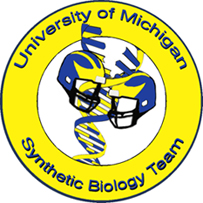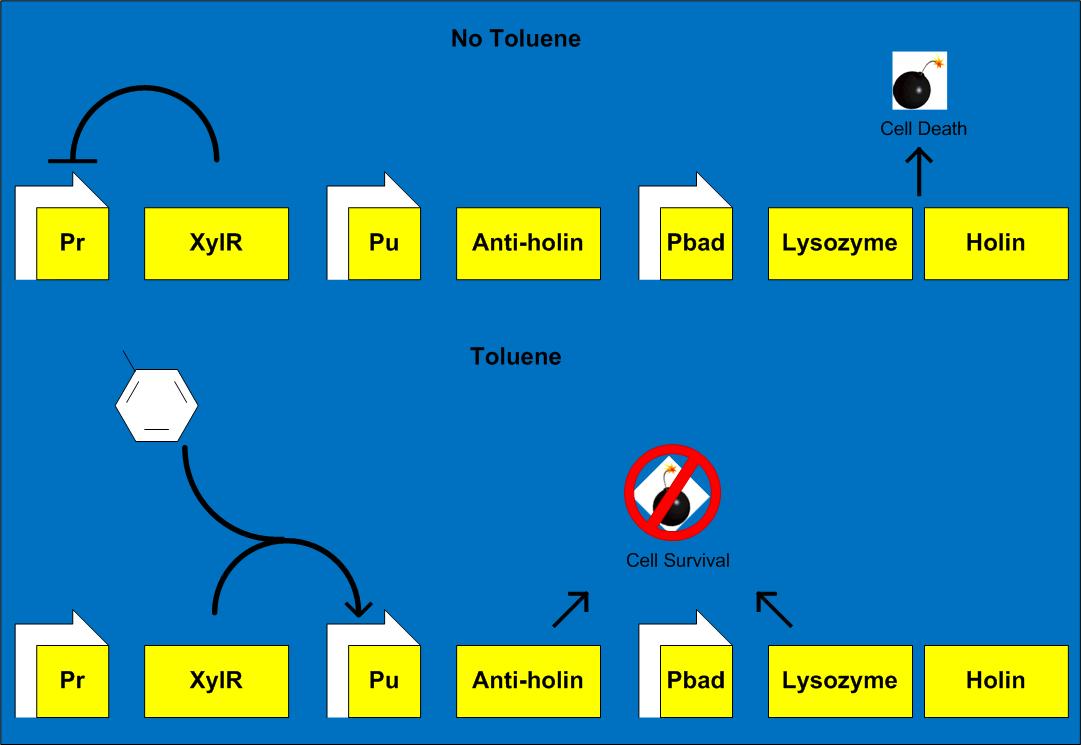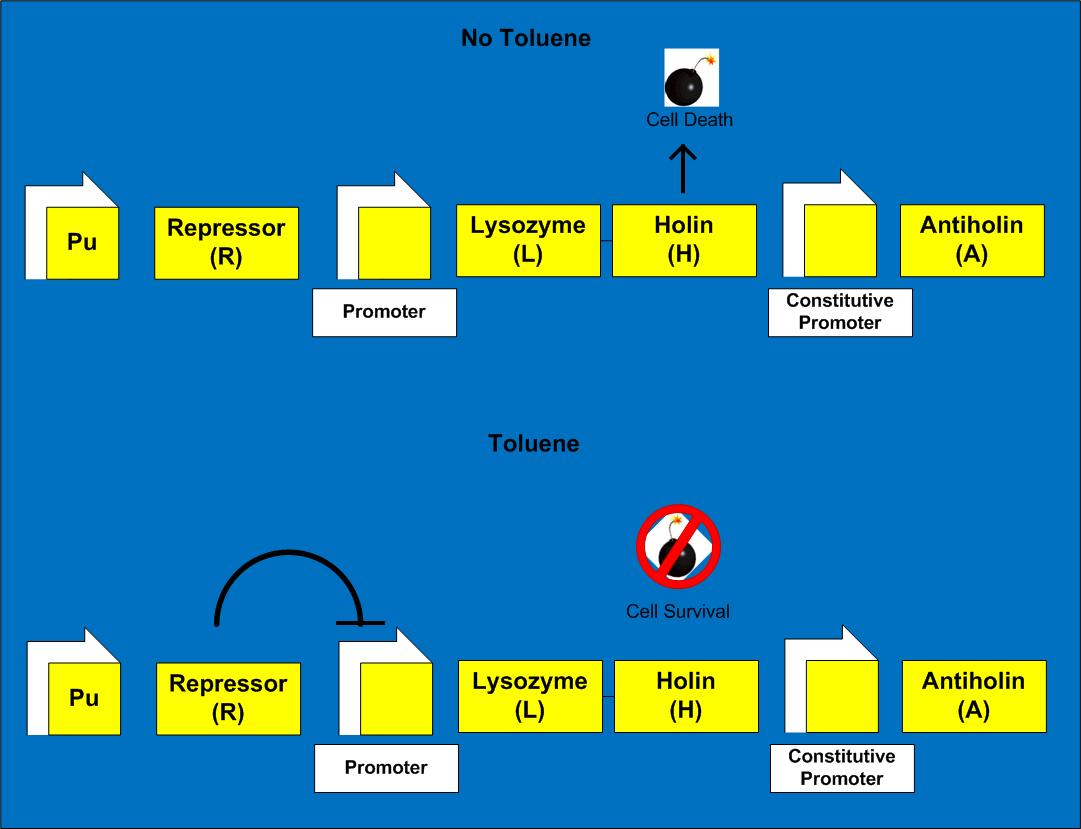Team:Michigan/Project
From 2009.igem.org
(Difference between revisions)
| Line 49: | Line 49: | ||
<B><font size=3>Arabinose Inducible Suicide Mechanism</font></B> | <B><font size=3>Arabinose Inducible Suicide Mechanism</font></B> | ||
| - | The suicide operon consists of an arabinose-dependent promoter controlling expression of the holin and | + | The suicide operon consists of an arabinose-dependent promoter controlling expression of the holin and lysozyme proteins, followed by the Pu promoter controlling the antiholin gene shown in the figure below. This way, none of the genes are activated until the device is released into the contaminated area, along with a quantity of arabinose. This results in the arabinose-mediated expression of the lytic genes holin and lysozyme, as well as the toluene-mediated expression of antiholin, which posttranslationally inhibits the lytic proteins. Then, when the toluene disappears (when it is all metabolized) from the local region of the individual device, antiholin is no longer expressed, allowing the lytic proteins to destroy the cell. |
| + | |||
The advantage of this design is the cells can be stored in the absense of arabinose without worrying about expressing the holin and lysozyme. When used in an actual bioremediation application, the arabinose promoter could be changed to a substrate that is already present in the contaminated environment to trigger cell death. This would also help prevent cells from poliferating in the environment after release. | The advantage of this design is the cells can be stored in the absense of arabinose without worrying about expressing the holin and lysozyme. When used in an actual bioremediation application, the arabinose promoter could be changed to a substrate that is already present in the contaminated environment to trigger cell death. This would also help prevent cells from poliferating in the environment after release. | ||
| Line 58: | Line 59: | ||
<B><font size=3>Suicide Mechanism with Tunable Repression</font></B> | <B><font size=3>Suicide Mechanism with Tunable Repression</font></B> | ||
| - | In this design, a repression mechanism is downstream of the Pu promoter, and this this represses the production of holin and | + | In this design, a repression mechanism is downstream of the Pu promoter, and this this represses the production of holin and lysozyme proteins. A constitutive promoter is placed in the front of the antiholin gene so antiholin is constantly produced. When toluene is present, it activates the Pu promoter which results in the repression of the promoter expressing holin and lysozyme. As a result, the cell survives. However, in the absence of toluene, the repressor protein is not produced, so holin and lysozyme levels rise to the point that the cells are lysed. |
| - | The motivation for this design is | + | The motivation for this design is the Berkeley 2008 design. It used an inducible promoter in front of the holin and lysozyme and this inducible promoter then would trigger the onset of the killing mechanism. In our design, we wanted to use Pu to make the killing mechanism responsive to toluene concentration. However, we needed to set this up such that Pu would prevent cell death. Due to this requirement, we designed an inverter that is comprised of the repression module. This way, we did not have to modify the Berkeley part, which is characterized as working. |
Revision as of 21:39, 21 October 2009
| ||||||||||||||||||||||
|---|---|---|---|---|---|---|---|---|---|---|---|---|---|---|---|---|---|---|---|---|---|---|
 "
"



